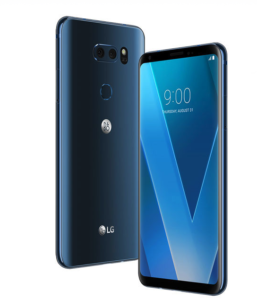Device Advice – LG V30
Welcome to the latest edition of our ‘Device Advice’ blog series, sharing our thoughts and insights into the most recent device releases from the world of mobile, tablets and beyond.
Poised as the no-compromise phone for media lovers, the LG V30 is packed with high-quality audio and a wide-aperture camera that on paper is certain to please many.
For LG, the latest flagship smartphone is intended to leave behind the previous disaster that was the G5 as a distant memory, with the revised company strategy for this device homing in on an audio offering its competitors cannot meet.
Stand out audio quality but lacking in display
For European owners of the LG V30, a pair of Bang and Olufsen headphones can be found in the box to set the scene of an audio-embracing device. Whilst Apple has moved away from the headphone jack, LG continues to embrace it, whilst the audio quality of the V30 is backed by a Hi-Fi Quad DAC (Digital-to-analogue converter) – a sound offering that cannot be matched by the leading smartphones. With 55 percent of internet music consumption taking place on a mobile,1 the offering from LG is competitive, and the audience base eager. That said, the speaker itself isn’t always up to par, becoming easily blocked when streaming video or media content from the device.
The LG V30 is a sleek phone, glass backed with rounded corners and a slimmed down bezel, enabling the display to be pushed out as far across the screen as possible. This gives the phone a more compact look despite its larger screen (6-inch compared to 5.7 on the V20). However, unlike the Samsung Galaxy S8 for instance, the display doesn’t curve around the device (coined the ‘infinity display’).
Media capabilities
The LCD panel has been swapped out for an OLED display, the first in an LG device, but once again the V30 falls slightly short of Samsung. The V30 contains a POLED (P for plastic), which is the same panel type that has let down the Google Pixel 2. That said, the Quad-HD resolution of the screen makes for seamless viewing, whilst for reading, it has an aspect ratio of 18:9 rather than 16:9 – reducing the distracting bezel.
For photography, the LG V30 features a 16Mp sensor with a wide f/1.6 aperture and a wide-angle 13Mp camera at the back. The front of the device features a 5Mp wide-angle lens. The wide aperture capabilities of the phone captures light in the sensor, resulting in silky imagery with a smooth finish. And not forgetting video, the V30 is capable of recording 4k video at 30 frames per second with a range of effects.
 In terms of storage, the LG V30 offers 64GB of internal memory with an expandable option of 2TB. It’s fast. With Snapdragon 835 and 4GB of RAM, it’s more than capable of performing everyday tasks. For gamers, the experience is a positive one. The device will allow users to immerse themselves without fear of dropping frames, whilst offering support for Google’s Daydream VR platform.
In terms of storage, the LG V30 offers 64GB of internal memory with an expandable option of 2TB. It’s fast. With Snapdragon 835 and 4GB of RAM, it’s more than capable of performing everyday tasks. For gamers, the experience is a positive one. The device will allow users to immerse themselves without fear of dropping frames, whilst offering support for Google’s Daydream VR platform.
The LG V30 offers a 3,000mAh battery, and as with its competitors, offers wireless charging. The battery is not removable this time around.
What about the operating system?
Initially, users will have to wait longer to get their hands on the latest operating system, Android 8.0, as the LG V30 will arrive running on 7.1.1. The wait for Oreo may last until the end of the year which for some is an understandable disappointment.
LG’s launch timing has impacted its release from the start; the subsequent launch of the Samsung Note 8, iPhone 8, iPhone X and Pixel 2 have all but snatched the spotlight. The proximity of release dates between these devices will ultimately invite comparisons, but an obvious difference lies in the price.
In the UK, an unlocked LG V30 starts at £665 excluding VAT, but compared with the iPhone X and Samsung Note 8 vastly approaching £1,000 the LG V30 is a more affordable choice for premium Android.
Stay tuned to the Adam Phones blog for more reviews of the latest devices, and make sure to keep in touch with us on Twitter, LinkedIn and Google+.
1 Ipsos Connect, Music Consumer Insight Report, 2016, available online: http://www.ifpi.org/downloads/Music-Consumer-Insight-Report-2016.pdf


